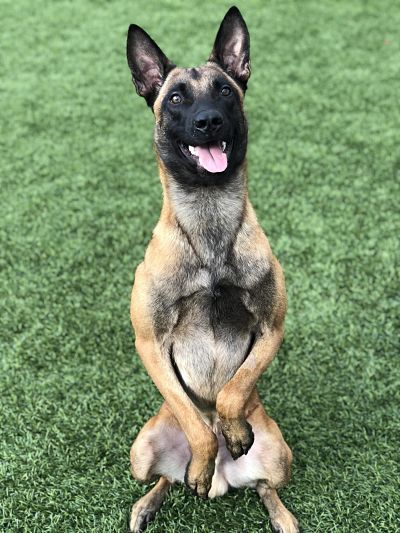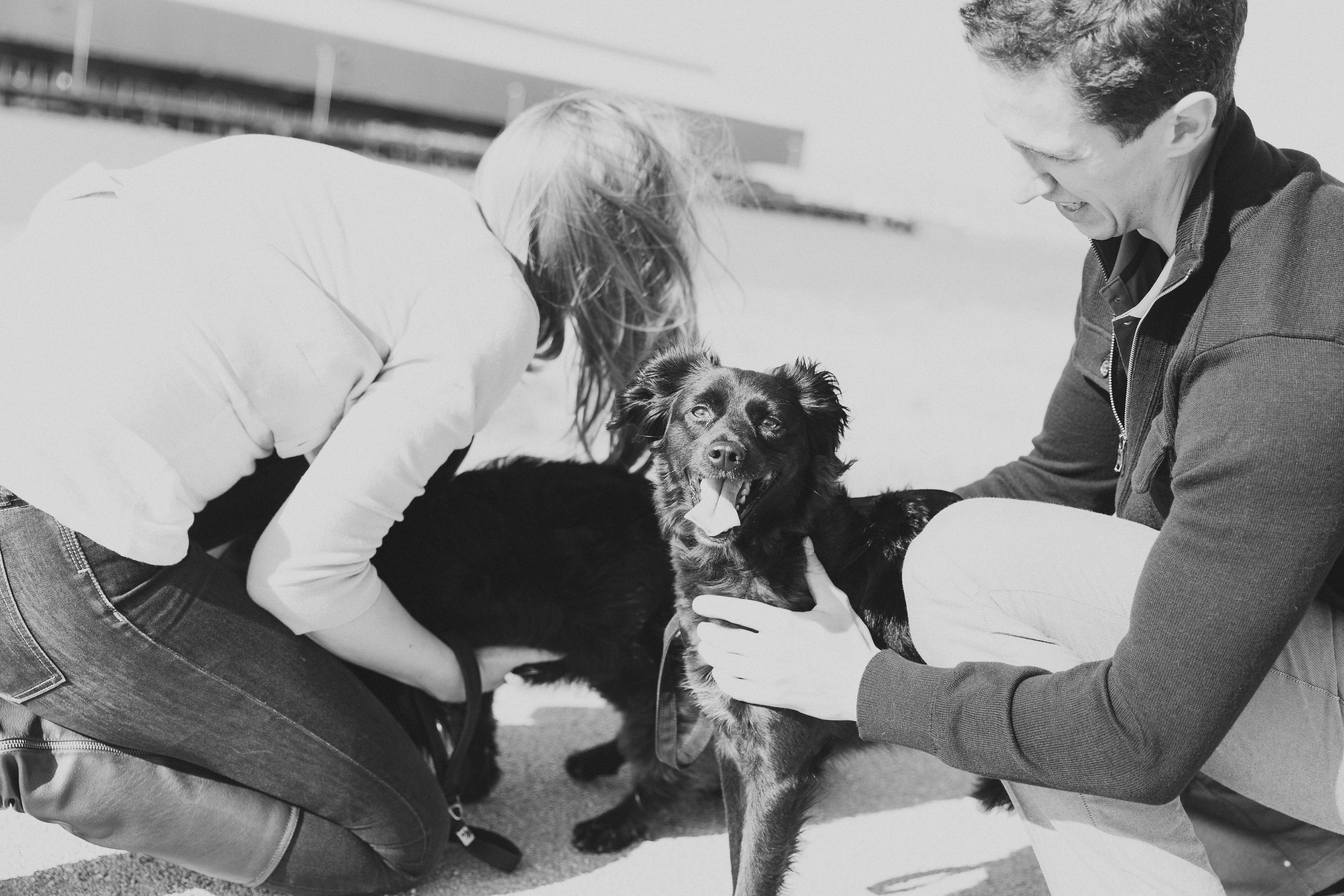Another very useful skill is teaching your dog to place just their front paws onto a surface. I will use something like a plastic horse feeder (the smallest one) or a touch pad for this. Using a food motivator, I will lure the dog to the object, and help them to begin to climb on to it. Once they have placed their front feet on to the object, I will mark ‘good target’ and reward and then use my release command to have them come off. I like to have some duration on this skill when shaping other behaviors, and I like to generalize to multiple objects.
“I like to have some duration on this skill when shaping other behaviors, and I like to generalize to multiple objects.”
Getting a dog to calmly hold an object can be a useful skill in teaching multiple complex types of retrieving behaviors. I will usually use a PVC pipe for this as well. Taking a small pipe, I will sit with it between my knees, and similarly to how I teach the ‘touch’, I will wait for the dog to show interest, mark, and pay. As they begin to offer this more readily, I will increase my criteria by waiting for them to mouth at it before rewarding them. This is a behavior that is best trained slowly and incrementally so your dog never has an aversion to taking something with their mouth. Once they can hold the pipe, you can begin to generalize to different objects and back chain retrieves!
These are three general behaviors I find I use very frequently when beginning to teach dogs more advanced tricks and even service work. Challenging you and your dog to learn new skills will keep your training fresh and open doors for the chance to teach awesome new parlor tricks!

What is your pup’s favorite trick? Share below!
